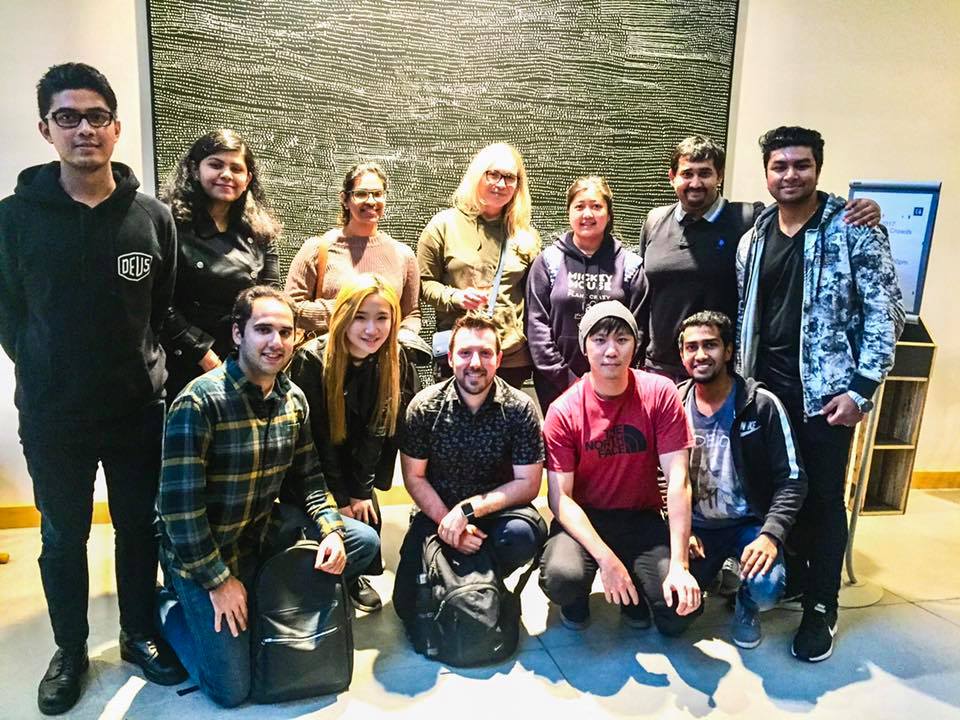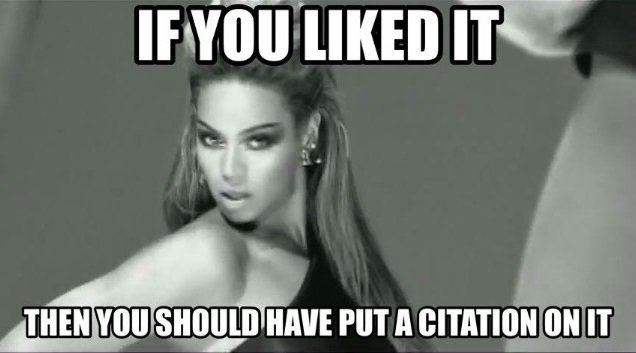We chat to Alex Belli, PhD student and casual academic and high commendation winner of the ‘Teaching by a Casual or Sessional Staff Member’ category at Vice Chancellor’s Learning and Teaching Showcase, about his advice for other casual tutors, top tips for engaging with millennials and ways he’s creating a cracker student experience, both in-class and online.

First up, meet Alex.
[Pictured: in black, middle front row, with his ‘Applied Marketing Research’ students]
Italian-born and raised, Alex moved to Sydney in 2013 to commence his PhD in consumer behaviour. He started teaching at UTS when one of his lecturers tapped him on the shoulder and asked him to lead a tute. He’s been a casual tutor here ever since. He teaches both PG an UG classes in marketing research and strategic marketing services, and will finish his PhD in a few short months (“Yes, finally!”, says Alex:)
Alex likes: learning foreign languages, travelling and busting out dance moves. His guilty pleasure? Cheesy 80s and 90s pop music.
5 questions with Alex
1. What was it that nabbed you a nomination?
In short, I created and implemented a number of tools that improve subject delivery and maximize student engagement. Coming from a marketing background, I apply the principles of the content I teach in services marketing directly to the experience my students have in my classes. You know, practice what I preach.
2. What sparked the changes to your teaching?
Being a UTS student and a millennial too, I’ve been able to experience what works and what doesn’t in the tute environment for students. This helped me to think of ways to maximize students’ learning and engagement. In a nutshell, I’ve been able to use my own learning experience to enhance the learning experience of others.
3. Any tips for engaging millennials?
We learn a lot from our teaching team members but also, and especially, from our students. Times change and new generations are stimulated through different types of media. We need to make sure we keep track of these stimuli in order to optimise our time in the classroom with them. My two tips would be:
- Try to understand where they are – not physically, but mentally. Be an ethnographer of your ‘customers’. Where are they online? What do they like? What’s happening in pop culture?
- Think about how they consume content. They’re visual. They like videos. They’re on social media. Long form case studies just don’t connect.

[Memes and gifs can drive home a message pretty quickly. For more on this, see ‘How to use memes in teaching: without turning into Steve Buscemi‘]
4. How have you changed-up your tutes?
I try to create a learning environment that’s relaxed and motivating. Some ways I do this:
- Create a killer classroom experience
In class, I’d play music in the background. But rather than just putting on any playlist, I create a Spotify playlist for each class based on the topics of the day. So say for ‘Services pricing’ the playlist included songs like ‘Bills, Bills, Bills’ by Destiny Child and Macklemore’s ‘Thrift Shop’. The songs may not correlate directly to subject outcomes but they create that engaging experience. I find it connects with my students and relaxes them. I’ve read that music brings us back to memories, so I’m hoping that if I create a connection for the students between these songs and the content, then they might retain the information better. And where possible, I use humour! I want students to know I’m approachable. - Make assessment tasks engaging
In my experience when students have an in-class presentation, they sometimes do the minimum amount of work required and rely a lot on aids. Plus, the presentation takes up a lot of time in the tutorial itself and many of my students said that they didn’t enjoy sitting through all the presentations. So for one subject, I asked students to submit their presentations as 10min video ‘pitches’ instead. I found that my students were more engaged and active – students like to consume information in video form and many of them have incredible skills in this media. Then, instead of everyone sitting passively in class watching presentations, we ran our own Oscars in class for the best-submitted pitches – think ‘best director’, ‘best concept’ etc. - Keep it current
I source industry news, consumer news, recent events etc. to engage students with the discipline and show them how close the content they’re learning is to their day-to-day life. For example, for our ‘customer experience’ tutorial we used a Coldplay concert, which many of the students had attended, to explore how all aspects of the event were catered to improve customer experience – from the merchandise to the entry bands that pulsed with the music. I source content from popular culture – more relatable to students’ lives, the more it sticks in their mind. I avoid using case studies, they can be dull and too long – students like quick digestible content. When a case study is needed, I get the students to act it out. For example, we had a case study for ‘service failure in a cinema’, so I brought in props and each student had to personify a character from the case study. This way rather than reading, they were engaged with the content. Plus, the result was pretty hilarious for us all! - Connect on social media
Use social media as a space to discuss current marketing problems; to source ideas; have polls and share information and tips on the subject. I create a Facebook group for each of my classes, and students who want to be part of a discussion after hours can be. We post interesting industry content that had come across our feeds, run polls on say ‘what do you think of this advertising campaign?’ with the results of the poll then discussed in the next tute. Currency is key, I want to be online in a space that seems less academic and lives where the students are. The result is much higher online engagement. - Continual feedback
I’ve always valued feedback and ‘feedforward’ as a learning strategy. I try to be as thorough and detailed as possible with assessment feedback so that my students know where they can do better in future assessments.
5. Any advice for casuals looking to improve their classroom experience?
As casuals, we’re often time-poor. The biggest challenge I’ve had is balancing my duties as a PhD student with my teaching. However remember you’re part of the teaching team, so you’re entitled to tell the lecturer you’re working for if something works and something doesn’t in your classroom. And there are small ways to improve the experience.
- Don’t be afraid to personalise your tute in ways where your experience and personality come through. The more genuine you are, the more students will trust and look up to you.
- Never be complacent with what you’ve done. Question your classes and think, could I make that one better? And make sure you find the class interesting. If you’re not engaged they definitely won’t be
- Listen to colleagues, other tutors and students. They can help you build a better subject and in-class experience.
- Use humour, technology and relatable content to connect with your students.
- Treat your students as active participants in your class and allow them to co-create knowledge.
- Smile ? A positive attitude goes a long way!
Meet Alex, and others like him, at the upcoming Vice Chancellor’s Learning and Teaching Showcase on Wednesday 6 June. It’s open to all UTS academic staff, including sessional academics, plus professional staff and students. Families, colleagues and the general public are also welcome. Register now.

[…] and their projects and read blog posts from two 2018 recipients: Casual academic Alex Belli ‘Top tips for tutors’ and Rebecca Keppel’s ‘You had me at bone marrow […]
Love this. Have just started as a casual this semester and loving it. Good to know I’m on the right track with some things (I play music in my classes too) but I love your other ideas. Will give them a go!